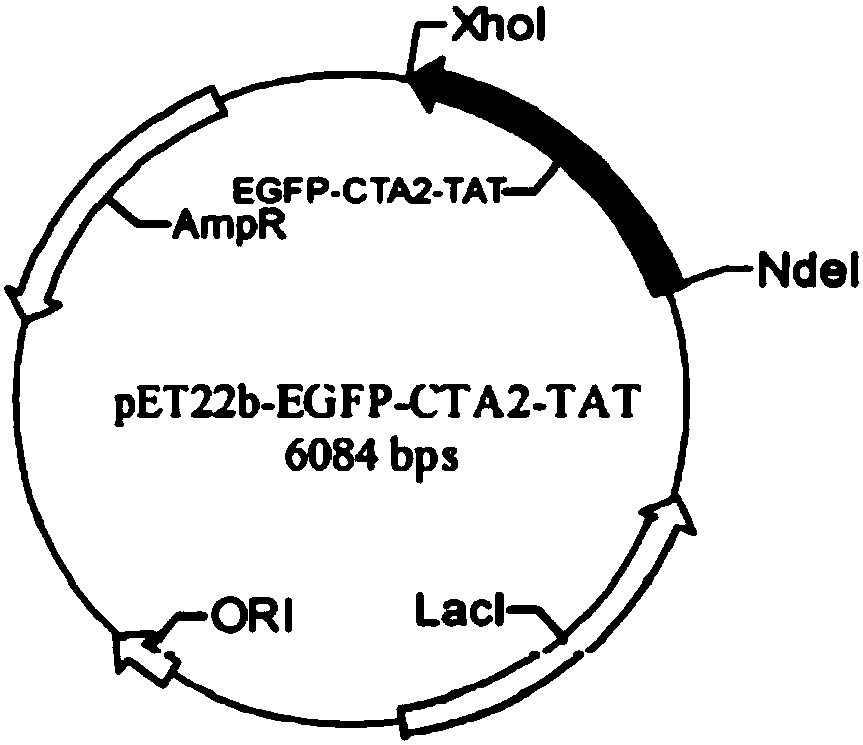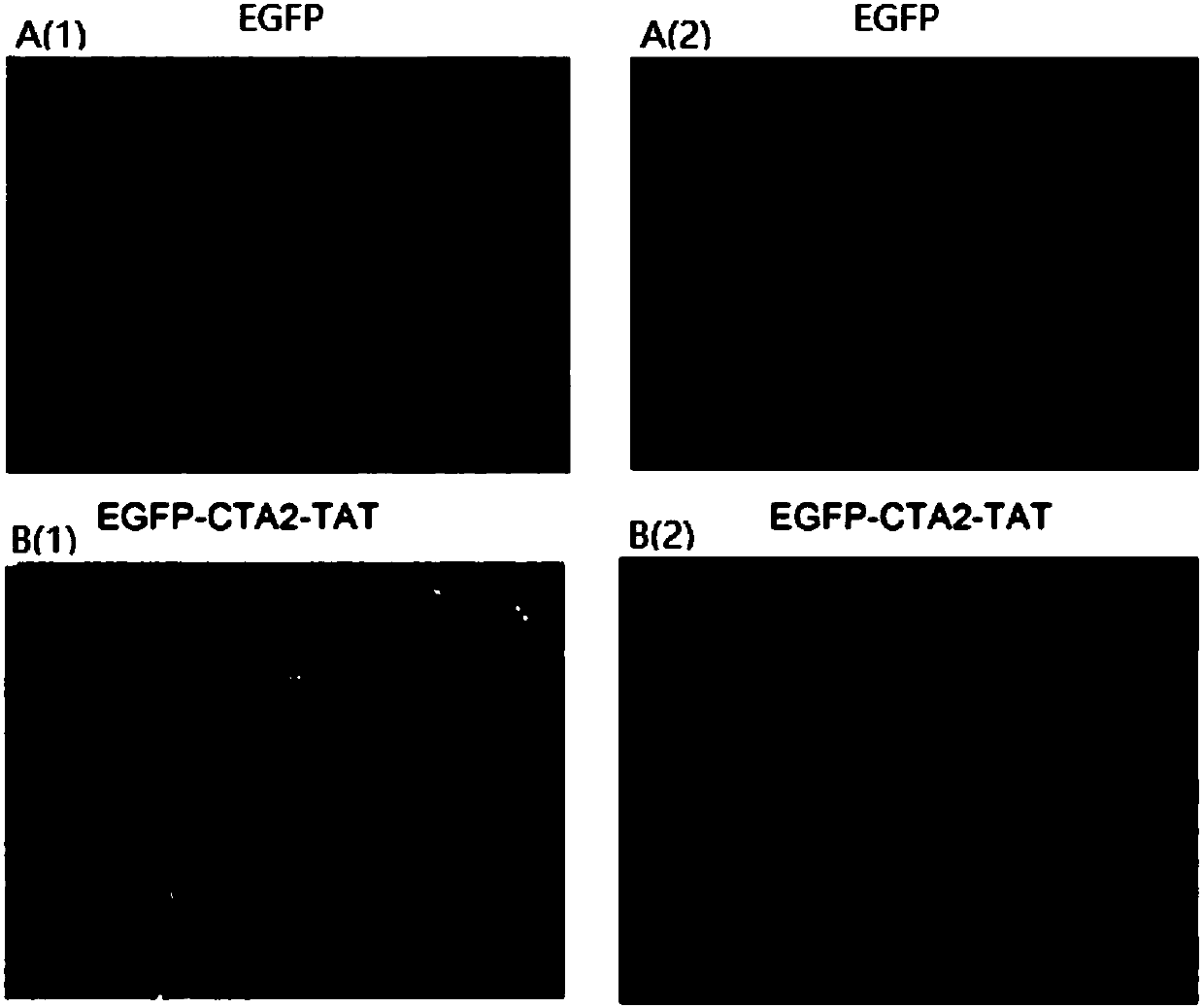Application of EGFP-CTA2-TAT fusion protein to preparation of fluorescent probe
An EGFP-CTA2-TAT and fusion protein technology, which is applied in the application field of EGFP-CTA2-TAT fusion protein in the preparation of fluorescent probes, and achieves the effects of improving sensitivity, no cytotoxicity, and good transmembrane activity.
- Summary
- Abstract
- Description
- Claims
- Application Information
AI Technical Summary
Problems solved by technology
Method used
Image
Examples
Embodiment 1
[0041] Embodiment 1 strain activation and glycerol tube preservation
[0042] (1) Plate preparation: LB solid medium ingredients, sterilized at 121°C for 30 minutes; light the alcohol lamp on the ultra-clean workbench with UV light on for 30 minutes in advance, and place the plate half-opened around the alcohol lamp; sterilized LB solid medium in the ultra-clean Cool the clean workbench to about 60°C, add ampicillin antibiotics (final concentration 50 μg / mL) and quickly pipette and shake well; finish pouring the plate before the medium solidifies, half-open the plate after pouring, open the workbench for ventilation, and cover it when the medium solidifies Wrap in plastic wrap for storage.
[0043] (2) Inoculation: a tube of 5mL LB liquid medium, first add 2.5μL ampicillin antibiotic stock solution (mother solution concentration 100mg / mL), then add 50μL E.coli BL21(DE3) containing recombinant plasmid pET22b-EGFP-CTA2-TAT Strain preservation solution; culture at 37°C, 200r / min...
Embodiment 2
[0047] The expansion culture of embodiment 2 target strains and the inducible expression of target protein
[0048] (1) The E.coli BL21 (DE3) monoclonal strain bacterial liquid containing the recombinant plasmid pET22b-EGFP-CTA2-TAT after the activation made in Example 1 is used in a volume ratio of 1:100 in a clean bench Inoculate into LB liquid medium containing ampicillin antibiotic (final concentration 50 μg / mL); then place at 37°C and culture overnight at 200 r / min on a shaker for 12 hours;
[0049] (2) On the ultra-clean workbench, transfer the bacterium liquid cultivated overnight in step (1) to the Erlenmeyer flask containing ampicillin antibiotic (final concentration 50 μg / mL) and LB liquid medium according to the volume ratio of 1:50; then Place on a 200r / min, 37°C shaker for 4 hours;
[0050] (3) Add IPTG with a final concentration of 1mmoL / L to the bacterial solution after the expanded culture in step (2); induce on a shaking table at 37°C and 200r / min for 5h;
...
Embodiment 3E
[0052] Example 3 Extraction and purification of EGFP-CTA2-TAT fusion protein
[0053] (1) Suspend the wet bacteria obtained in Example 2 in lysis buffer (PBS buffer) (wet bacteria: lysis buffer = 1 g: 10 mL); add lysozyme (final concentration 80 μg / mL) and use magnetic Stir evenly with a stirrer; put the above mixture in the refrigerator for repeated freezing and thawing, if the bacterial solution is still viscous after repeated freezing and thawing, add DNase for further cracking;
[0054] (2) When the bacterium in step (1) is fully lysed to ensure that it is no longer viscous, use a refrigerated centrifuge to centrifuge at 4°C and 10,000r / min for 10min, discard the precipitate and collect the supernatant to obtain a supernatant protein solution;
[0055] (3) Chromatographic column wet packing (Ni-Sepharose 6FF (His tag purification resin)), connect the chromatographic instruments (nucleic acid protein detector, peristaltic pump, chromatographic column) to take over each tube...
PUM
 Login to View More
Login to View More Abstract
Description
Claims
Application Information
 Login to View More
Login to View More - R&D
- Intellectual Property
- Life Sciences
- Materials
- Tech Scout
- Unparalleled Data Quality
- Higher Quality Content
- 60% Fewer Hallucinations
Browse by: Latest US Patents, China's latest patents, Technical Efficacy Thesaurus, Application Domain, Technology Topic, Popular Technical Reports.
© 2025 PatSnap. All rights reserved.Legal|Privacy policy|Modern Slavery Act Transparency Statement|Sitemap|About US| Contact US: help@patsnap.com



